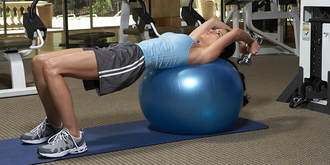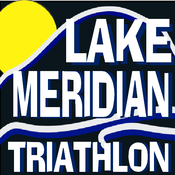 By Holly Pennington, PT, DPT/Outpatient Physical Therapy Now that you know how to make the most of your indoor aerobic workouts (see Part 1 in the November newsletter), let’s explore what would happen if you swapped some of your treadmill time for resistance training. Isn’t aerobic training enough? Would your endurance training suffer? How would you begin? Weight training, especially if it is new to you, can feel intimidating and less effective than 20 more minutes in the pool, but knowing the answers to these questions will help you make the most of your indoor training this winter. Isn’t aerobic training enough? You know that resistance training is good for you, but, as a triathlete, you aren’t sure why you need it. You are in great shape aerobically and exercise plenty. But weight training has specific, unique benefits that are important to your overall health and training longevity:
Will your endurance training suffer? The research on strength training for endurance athletes is convincing. It has been shown to increase Running Economy (a complicated scientific measure of how well your body uses oxygen while running: think of it as similar to the fuel economy of your car) in highly trained middle- and long-distance runners. In another study, resistance training improved time-trial performance and economy in competitive endurance athletes. The National Strength and Conditioning Association’s book, Developing Speed, concludes “The athlete who performs both resistance and endurance training in an integrated and appropriately planned fashion will perform at a higher level than the athlete who performs only classic endurance training.” When it comes to burning calories, the truth is that resistance training burns more calories than aerobic workouts in the long run. Compare real time workouts calorie-to-calorie, and time spent on the treadmill will most likely surpass time spent curling dumbbells. But, over time – even in the 24 hours after workouts - weight training burns more calories because it increases muscle tissue. Muscle burns 3-5 times more calories per hour than fat tissue, making your body more efficient at rest, with training and while racing. How do you begin a weight training program? As is true with anything in the fitness world, there are plenty of ideas and opinions about how to build muscle and do resistance training “right.” But, like most things in life, there are infinite paths to success and a few guiding principles:
As with aerobic exercise, make the most of your resistance training by sticking to sport-specific activities. Here are a few specific exercises to get you started: Swimming: Lat Pull Downs (pull down to chest in front of you, One-Arm Cable Pull from low height with high elbow, Lateral Raises, Planks Cycling: Leg Press, Squat, Lunges, Hamstring Curls Running: Single Leg Squats, Calf Raises, Hip Extension Bridges with Swiss Ball Now you know why adding resistance training to your indoor workouts is worth your and how to get started. Go ahead, change up your winter training in 2018 and watch your body change and race times drop! Looking for more ideas about weight training? Call any Outpatient Physical Therapy clinic to schedule your free consultation (no fee, no prescription or referral needed) with a licensed Physical Therapist. Find a location near you at www.outpatientpt.com Sources: Balsalobre-Fernández C1, Santos-Concejero J, Grivas GV. Effects of Strength Training on Running Economy in Highly Trained Runners: A Systematic Review With Meta-Analysis of Controlled Trials. J Strength Cond Res. 2016 Aug;30(8):2361-8. Beattie K1, Kenny IC, Lyons M, Carson BP. The effect of strength training on performance in endurance athletes. Sports Med. 2014 Jun;44(6):845-65
0 Comments
Your comment will be posted after it is approved.
Leave a Reply. |
Raise the BarRace reports, upcoming events, news, and more, from RTB. Archives
September 2023
|

 RSS Feed
RSS Feed




